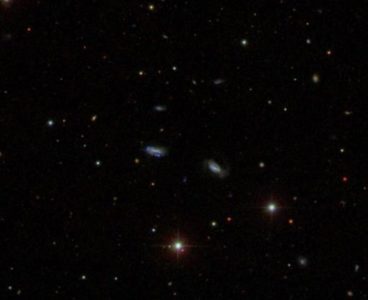Astronomers using the National Science Foundation’s Karl G. Jansky Very Large Array (VLA) have made the first radio-telescope detection of a planetary-mass object beyond our Solar System. The object, about a dozen times more massive than Jupiter, is a surprisingly strong magnetic powerhouse and a “rogue,” traveling through space unaccompanied by any parent star. “This…
Trio of Infant Planets Discovered Around Newborn Star
Two independent teams of astronomers have uncovered convincing evidence that three young planets are in orbit around an infant star known as HD 163296. Using a new planet-finding strategy, the astronomers identified three discrete disturbances in a young star’s gas-filled disk: the strongest evidence yet that newly formed planets are in orbit there. Over the…
ALMA Eyes Icy Ring Around Young Planetary System
An international team of astronomers using the Atacama Large Millimeter/submillimeter Array (ALMA) has made the first complete millimeter-wavelength image of the ring of dusty debris surrounding the young star Fomalhaut. This remarkably well-defined band of rubble and gas is likely the result of exocomets smashing together near the outer edges of a planetary system 25…
Astronomers Find Seven Dwarf-Galaxy Groups, the Building Blocks of Massive Galaxies
Dwarf galaxies, nuggets of stars and gas 100 to 1,000 times smaller than the Milky Way, are thought to be the building blocks of massive galaxies. Evidence for groups of merging dwarf galaxies, however, has been lacking, until now. Using data from the Sloan Digital Sky Survey (SDSS) and various optical telescopes, a team of…




